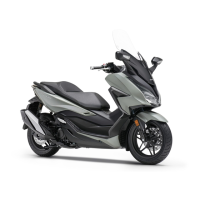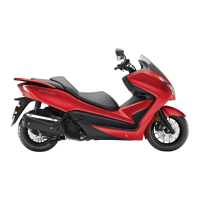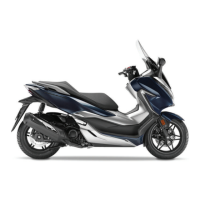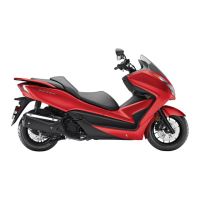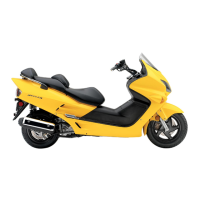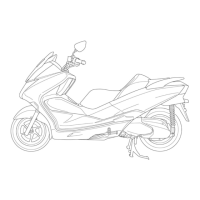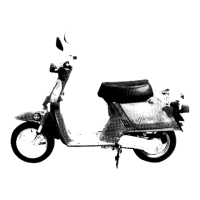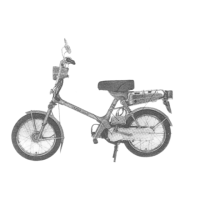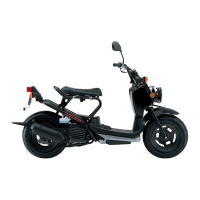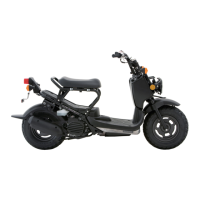Caring for Your Vehicle
Frequent cleaning and polishing is important to
ensure the life of your Honda. A clean vehicle
makes it easier to spot potential problems.
In particular, seawater and salts used to prevent
ice on roads promote the formation of
corrosion. Always wash your vehicle thoroughly
after riding on coastal or treated roads.
Washing
Allow the engine, muffler, brakes, and other
high-temperature parts to cool before washing.
1.
Rinse your vehicle thoroughly using a low
pressure garden hose to remove loose dirt.
2.
If necessary, use a sponge or a soft towel
with mild cleaner to remove road grime.
u Clean the windscreen, headlight lens,
panels, and other plastic components
with extra care to avoid scratching them.
Avoid directing water into the air cleaner,
muffler, and electrical parts.
3.
Thoroughly rinse your vehicle with plenty of
clean water and dry with a soft, clean cloth.
4.
After the vehicle dries, lubricate any moving
parts.
u Make sure that no lubricant spills onto
the brakes or tyres. Brake discs, pads,
drum or shoes contaminated with oil will
suffer greatly reduced braking
effectiveness and can lead to a crash.
5.
Apply a coat of wax to prevent corrosion.
u
Avoid products that contain harsh
detergents or chemical solvents. These
can damage the metal, paint, and plastic
on your vehicle.
Keep the wax clear of the tyres and brakes.
u If your vehicle has any mat painted parts,
do not apply a coat of wax to the mat
painted surface.
20201006171709_32K1BF000_eng_BOOK Page 142 Tuesday, October 06 2020 17:20:39 JST
Caring for Your Vehicle
Information
139
Continued
